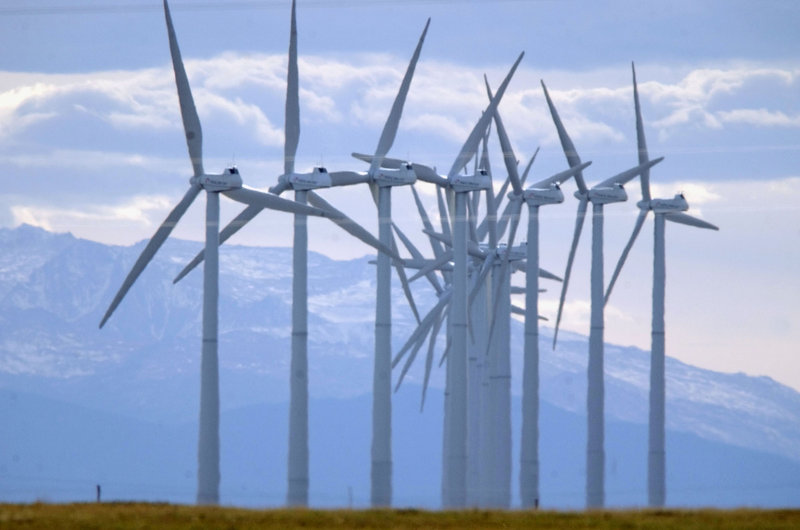WICHITA, Kan. — BP Wind Energy certainly was getting its money’s worth recently as a steady 30-mile-an-hour wind spun the 148-foot-long turbine blades at the Flat Ridge 1 wind farm at a surprisingly fast clip.
The 100-megawatt wind farm north of Medicine Lodge, Kan., has spawned a now-under-construction extension, Flat Ridge 2, that is four times bigger. It’s a key reason Kansas is the nation’s top destination for wind farm construction this year, with a near-doubling of the state’s power generating capacity to more than 2,600 megawatts.
But any prospects for a Flat Ridge 3 look pretty dim right now, as Congress appears unwilling to renew a federal wind power tax credit that expires Dec. 31.
An industry executive said plainly that losing the subsidy will kill almost all new construction because it makes the power too expensive. One wind energy manufacturer in Colorado is promising large layoffs if the subsidy isn’t renewed.
Wind farms built before the end of the year are unaffected and will continue to receive the tax break.
It’s a big potential blow to Kansas Gov. Sam Brownback’s vision for a vibrant state wind industry, in the form of the new wind farms and manufacturers such as the Siemens plant in Hutchinson. A lot of time and money has been spent preparing the state for rapid growth.
There’s a lot at stake for Kansas, said state Secretary of Commerce Pat George. And, he said, it’s inevitable that wind power is going to be needed, eventually.
“There is a diminishing amount of coal and gas. When that will be I don’t know, but it’s coming,” he said. “This helps our nation to be less dependent on other forms of energy.”
The Production Tax Credit was most recently approved in 2009 as part of President Obama’s stimulus effort, although it has largely been in effect since 1992.
It provides 2.2 cents per kilowatt hour for utility-scale wind power producers. With the subsidy, said John Graham, CEO of BP Wind Energy, wind-generated electricity is competitive with the least expensive common alternatives.
The cost of wind generation has fallen significantly as wind turbines and wind farms get bigger, manufacturing moves from Europe to the U.S., and the technology improves. The cost is close to being competitive, but it is still a few years away, Graham said.
The tax credit, Graham said, costs the government $3.5 billion a year and attracts $15 billion to $20 billion in investment. Sixty percent of wind energy components are now made in the U.S. “We think it’s a very good return,” he said.
Apparently so does the rest of the industry. It has launched into a frenzy of production that Matt Kaplan of IHS Emerging Energy Research in Cambridge, Mass., estimates will add 12 gigawatts of generating capacity, about 20 percent more than the previous peak year.
If the tax credit isn’t renewed for 2013? Kaplan estimates construction of 1.5 to 2 gigawatts — about an 85 percent decline.
It’s happened before. When Congress failed to renew the tax credit in 1999, 2001 and 2003, new construction plummeted between 73 and 93 percent the following year.
“The industry is at the edge of a cliff right now,” Kaplan said.
Although wind prices have come down, the shale gas drilling boom has dropped the price of gas below $2.50 per thousand cubic feet. Coal is also a natural low-cost competitor, Kaplan said, but there are enough environmental regulations to slow the opening of new plants.
“If gas were to return to $6 or $8 per thousand cubic feet, wind would be competitive,” he said.
Copy the Story LinkSend questions/comments to the editors.



Success. Please wait for the page to reload. If the page does not reload within 5 seconds, please refresh the page.
Enter your email and password to access comments.
Hi, to comment on stories you must . This profile is in addition to your subscription and website login.
Already have a commenting profile? .
Invalid username/password.
Please check your email to confirm and complete your registration.
Only subscribers are eligible to post comments. Please subscribe or login first for digital access. Here’s why.
Use the form below to reset your password. When you've submitted your account email, we will send an email with a reset code.